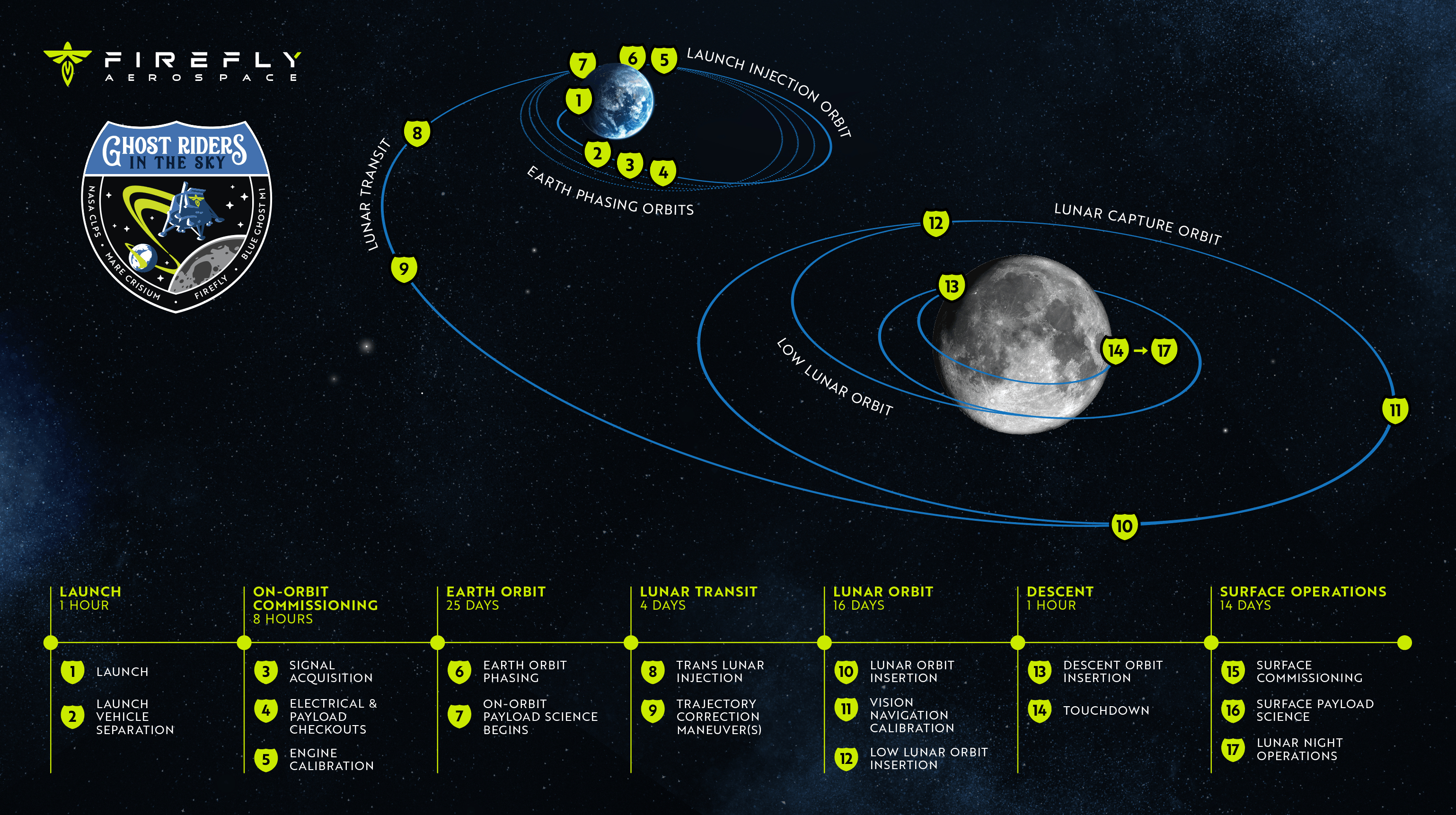SpaceX and NASA are now targeting mid-January for the launch of the private moon lander “Blue Ghost.”
Firefly Aerospace’s Blue Ghost lunar lander is now scheduled to launch to the moon at 1:11 a.m. EST (0611 GMT) on Wednesday, Jan. 15, taking off from Launch Complex 39A at NASA’s Kennedy Space Center in Florida. The mission, known as “Ghost Riders in the Sky,” will see Blue Ghost will ride to space aboard SpaceX’s workhorse Falcon 9 rocket.
Livestream information has not yet been made available, but we will be tracking how to watch as NASA and SpaceX announce more details.
Tagging along for the flight will be the Resilience moon lander built by Japanese firm ispace. The company previously attempted a moon landing with its Hakuto-R lander, which ultimately crashed into the lunar surface in April 2023.
After launching, Blue Ghost will spend 25 days orbiting Earth before performing an engine burn to put it on a lunar transit trajectory that will take it to the moon. Once there, it will spend 16 days orbiting the moon while preparing for an autonomous landing on the surface. Its destination is Mare Crisium (“Sea of Crises”), a large basaltic plain some 460 miles wide (740 kilometers) formed by an ancient asteroid impact.
Within 30 minutes of touching down, if all goes according to plan, the lander should begin transmitting its first high-definition images from the lunar surface. Blue Ghost will only have 14 days on the moon before lunar night falls, depleting the lander of its solar power source — although its batteries should give it about five hours of power to capture lunar dusk.

Blue Ghost will carry 10 NASA-led science experiments and technology demonstrators to the lunar surface as part of the agency’s Commercial Lunar Payload Services Program, or CLPS.
One of those experiments, known as the Lunar Environment Heliospheric X-ray Imager, or LEXI, will observe Earth’s magnetic field as it’s bombarded by energetic particles blown from the sun on the solar wind. The experiment could help scientists watch processes occurring in the magnetosphere that they’ve never seen before.
“We expect to see the magnetosphere breathing out and breathing in, for the first time,” said NASA’s Hyunju Connor in a statement. “When the solar wind is very strong, the magnetosphere will shrink and push backward toward Earth, and then expand when the solar wind weakens.”
Blue Ghost will also carry the Stereo Cameras for Lunar Plume-Surface Studies (SCALPSS) instrument, a system of two cameras that will watch how the lunar surface reacts to being disturbed by Blue Ghost’s engines during landing.
Other instruments will collect and study samples of moon dust (or regolith), measure the radiation environment on the lunar surface, and even study the electrical conductivity of the interior of the moon. One experiment, known as the Electrodynamic Dust Shield (EDS), will test a new method for repelling harmful lunar dust using an electrical charge.
As with other CLPS deliveries, Blue Ghost will also carry a prism-like laser reflector device that NASA will target with laser pulses shot from Earth. The experiment will help measure the distance from the Earth to the moon with sub-millimeter accuracy.
If it makes a successful landing, Blue Ghost will be the second CLPS mission to reach the lunar surface. The first, Intuitive Machine’s IM-1 Odysseus mission, landed near the Malapert-A crater on Feb. 22, 2024. Odysseus was the first private spacecraft to ever land on the moon.
A month prior to Odysseus, the Astrobotic Peregrine lander attempted to reach the moon, but failed to reach its destination after a faulty valve caused a catastrophic propellant leak. Peregrine eventually fell back to Earth and burned up in Earth’s atmosphere.
Article by:Source brett.tingley@futurenet.com (Brett Tingley)




















